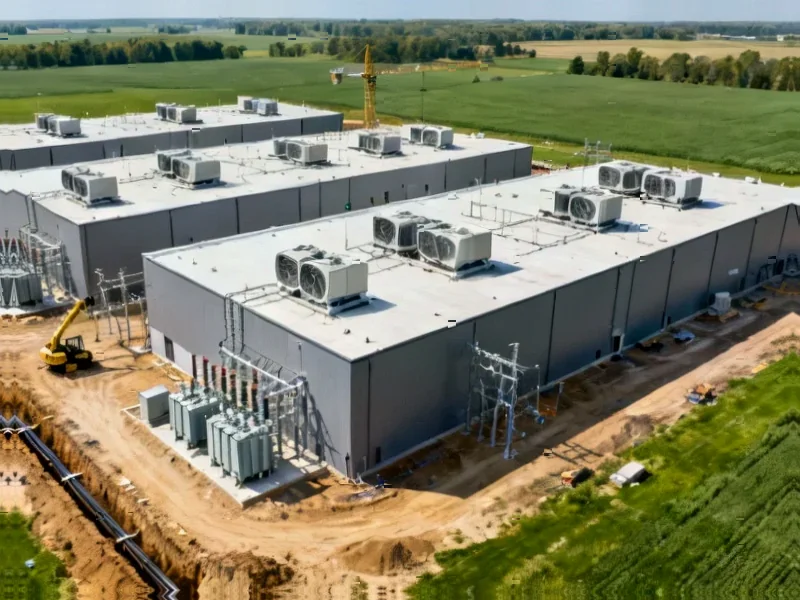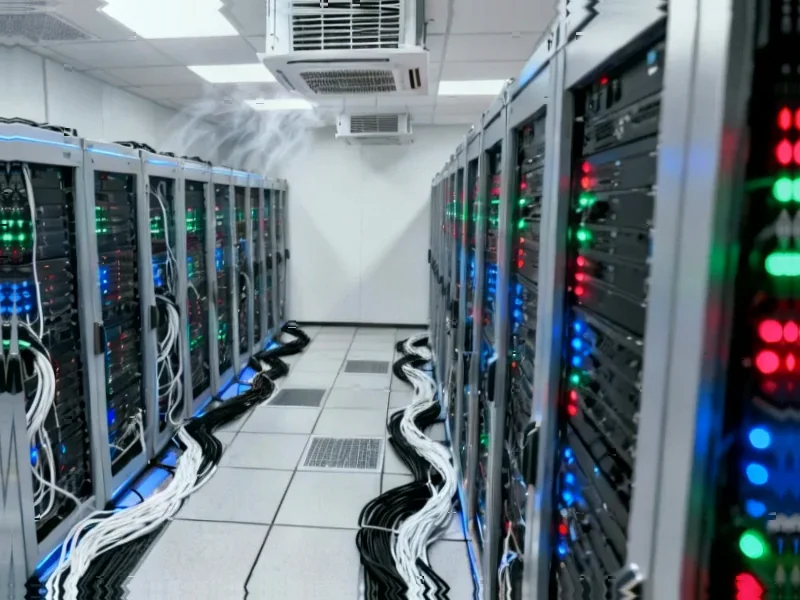According to Fortune, OpenAI and Amazon have signed a $38 billion agreement enabling the ChatGPT maker to run its artificial intelligence systems on Amazon’s data centers in the U.S. The deal announced Monday provides OpenAI access to “hundreds of thousands” of Nvidia’s specialized AI chips through Amazon Web Services, with all capacity targeted for deployment before the end of 2026 and potential expansion into 2027 and beyond. Amazon shares increased 4% following the announcement, which comes less than a week after OpenAI altered its partnership with longtime backer Microsoft. The agreement represents part of OpenAI’s recent $1 trillion worth of financial obligations for AI infrastructure, including data center projects with Oracle and SoftBank and semiconductor supply deals with Nvidia, AMD and Broadcom. This massive infrastructure expansion signals a fundamental shift in how AI companies are approaching compute capacity.
Microsoft’s Cloud Monopoly Broken
The most immediate impact of this deal is the shattering of Microsoft’s exclusive hold on OpenAI’s cloud computing needs. For years, Microsoft positioned itself as OpenAI’s primary infrastructure partner, leveraging this relationship to drive Azure adoption and position itself as the leading AI cloud provider. Now, OpenAI has demonstrated it won’t be tethered to a single provider, which creates both opportunities and challenges across the industry. Microsoft must now compete directly with AWS for OpenAI’s business, potentially forcing more competitive pricing and service offerings. This diversification strategy makes strategic sense for OpenAI, reducing dependency risk while gaining leverage in negotiations. The timing is particularly significant given OpenAI’s recent regulatory approval to form a new business structure that facilitates capital raising and profit generation.
AWS Catches Up in Generative AI
Amazon has been playing catch-up in the generative AI race despite its cloud dominance, and this deal represents a massive validation of its AI infrastructure capabilities. While AWS has extensive machine learning services, it lacked the marquee generative AI partnership that Microsoft enjoyed with OpenAI. This agreement immediately positions AWS as a serious contender for enterprise AI workloads, potentially accelerating adoption among businesses that were previously hesitant about AWS’s generative AI offerings. The scale of this commitment—hundreds of thousands of Nvidia chips—demonstrates that AWS can handle the most demanding AI workloads. More importantly, it provides Amazon with invaluable insights into scaling cutting-edge AI models that can inform its own AI development efforts and service improvements.
The Capital-Intensive Reality of AI
This $38 billion commitment underscores the staggering capital requirements of competing at the forefront of artificial intelligence. OpenAI’s total $1 trillion in infrastructure commitments reveals an industry where compute capacity has become the primary constraint and competitive advantage. What’s particularly noteworthy is the “circular” nature of these deals that Fortune highlighted—cloud providers are essentially financing their customers’ infrastructure needs based on projected future revenue. This creates significant financial risk for all parties involved, especially since OpenAI isn’t yet profitable. The model assumes that AI revenue will grow sufficiently to cover these massive infrastructure investments, but if adoption slows or competition intensifies faster than expected, these deals could become financial anchors rather than growth engines.
Competitive Ripple Effects
The OpenAI-AWS partnership creates immediate pressure on other cloud providers and AI companies. Google Cloud now faces increased competition from both Microsoft and Amazon in the high-end AI infrastructure space, potentially forcing accelerated investment in their own AI hardware and software stacks. For AI startups, this deal sets a new benchmark for the scale of infrastructure partnerships needed to compete with OpenAI. It also raises questions about Amazon’s relationship with Anthropic, its primary AI startup partner, and whether resources might be diverted to support OpenAI’s massive requirements. The semiconductor industry faces its own challenges, as Nvidia must now supply hundreds of thousands of additional high-end chips while also managing demand from other AI companies and cloud providers.
Enterprise Customers Stand to Benefit
For enterprise customers, this increased competition between cloud providers should translate into better pricing, more feature-rich AI services, and improved reliability. The massive scale of OpenAI’s AWS deployment will likely drive infrastructure innovations that benefit all AWS customers, while Microsoft will be motivated to enhance its Azure AI offerings to retain its competitive position. However, customers should also be cautious about potential service fragmentation—as AI companies spread their workloads across multiple clouds, ensuring consistent performance and data governance becomes more complex. The industry may see emerging standards for AI workload portability, similar to how Kubernetes standardized container orchestration across cloud providers.
Long-Term Implications
Looking beyond 2026-2027, this deal signals that the AI infrastructure market is maturing into a multi-provider ecosystem rather than winner-take-all dynamics. No single cloud provider can realistically meet the compute demands of leading AI companies alone, which creates opportunities for specialized infrastructure providers and hybrid approaches. The massive capital commitments also suggest that OpenAI is planning far more computationally intensive AI models than what exists today, potentially pointing toward artificial general intelligence research that requires orders of magnitude more compute than current systems. As these infrastructure investments come online through 2026, we should expect accelerated AI capability growth, but also increased scrutiny on the economic sustainability of these capital-intensive approaches.




